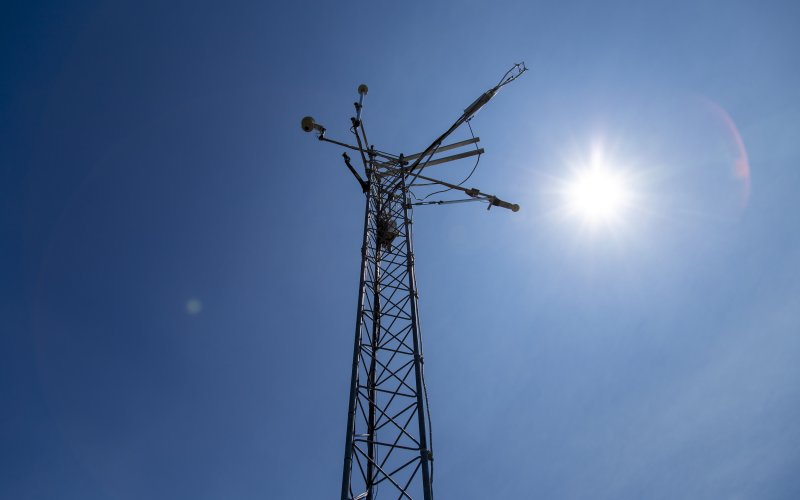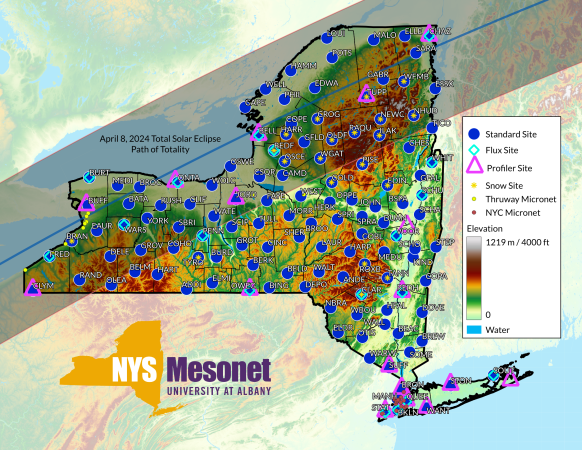New York State Mesonet Launches Total Solar Eclipse Website

By Mike Nolan
ALBANY, N.Y. (March 28, 2024) — A new website launched by the New York State Mesonet at the University at Albany will offer real-time access to weather data statewide around the total solar eclipse on April 8.
A total solar eclipse occurs when the moon passes between Earth and the sun, completely blocking the sun’s face. In total, 55 NYS Mesonet sites will experience totality during the eclipse, and every site will be above 90 percent at the peak of the eclipse crossing the region.
As the eclipse traverses New York, the Mesonet will be tracking weather data from each of its network sites, including environmental variables such as wind speed, solar radiation, temperature and relative humidity.
The Mesonet eclipse website, which is now available to the public, offers live weather information and camera images from each of its 126 standard sites, with updates every five minutes, along with additional data from its specialized networks.
“This new website will offer the first interactive Mesonet tool that allows people to see a full day of data from all 126 stations all at once,” said Nathan Bain, senior software engineer at the NYS Mesonet. “When people interact with the dashboard, they will see Mesonet stations of interest highlighted across the page, starting and ending times of the eclipse for each station, and photos taken every five minutes. As the eclipse traverses the state, markers on the graphs will indicate when the eclipse is starting and ending, allowing people to easily see how the eclipse impacts the weather.”
The Mesonet network was completed in April 2018, with UAlbany leading the design, installation and operation. Each of its 126 standard environmental monitoring stations, spaced an average of about 19 miles apart across the state, are equipped with automated sensors that provide high-quality weather data and offer camera images.
Several sub-networks of specialty sites have also been deployed, including a Profiler Network of 17 sites that provide data about the atmosphere vertically (up to 6 miles above ground) and a Flux Network of 18 stations that monitor surface energy.
In addition to tracking the eclipse through the Mesonet, a team of UAlbany students are participating in NASA’s 2023-24 Nationwide Eclipse Ballooning Project. Through the project, they will be launching weather balloons from Fort Drum, N.Y. for 30 consecutive hours around the total eclipse. The data will be observed in real-time and compared to data from nearby Mesonet sites.
“Solar radiation is Earth’s primary source of energy, so the blocking of the sun during April’s total solar eclipse will offer an ideal testing laboratory to understand the meteorological, ecological, photochemical, and biological responses to eclipse events,” said NYS Mesonet Program Director June Wang. “We are taking full advantage, collecting meteorological data both on the ground and in the atmosphere.”
The NSF National Center for Atmospheric Research is also deploying MicroPulse DIAL (MPD) LiDARs at three Mesonet profile network sites (Webster, Chazy and Albany) from April 1 to 30. The collected data will be used to study the impacts of the total solar eclipse on the atmosphere.





